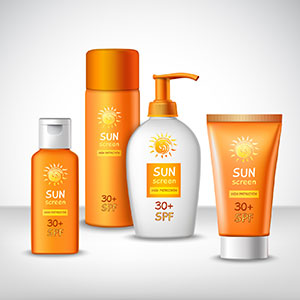Protecting yourself from the sun is something we all seem to talk about, but very few people understand. We’re defining and explaining UVA and UVB rays as well as SPF to help you gain a better understanding of how and why you need to protect your skin from the sun.
UVB
UVB rays intensity vary by season, location and time of day. In general, UVB rays are strongest in the United States between 10am-4pm from April to October. However, UVB rays can burn and damage your skin year round. UVB rays are the main cause for red and sunburned skin. UVB rays damage the skin’s superficial layers. These rays lead to skin becoming red and peeling. UVB rays also play a key role in the development of skin cancer and contribute in tanning and skin aging from sun damage.
UVA
UVA rays make up about 95% of the radiation that reaches the Earth’s surface from the sun. UVA rays can penetrate clouds, glass and are prevalent year round. UVA plays a major role in skin aging and wrinkling because it more deeply penetrates the skin than UVB rays. UVA rays are also the dominant ray used in tanning salons.
Whether inside or out, UVA rays cause injury to the skin’s DNA which results in tanner, darker skin. Your tan is your body’s attempt to prevent further DNA damage. UVA ray skin damage can lead to skin cancer. It’s important to understand that both UVA and UVB rays play an important role in your skin’s health. Skin damage from either source can lead to skin cancer, premature aging and other skin conditions.
SPF
SPF stands for Sun Protection Factor. This system refers to a products ability to screen or block out the sun’s rays. An SPF of 45 means that you could be out in the sun 45 times longer before you get sunburned than if you went without sunscreen. Of course, you must reapply according to the manufacturer’s suggestion for this to be true.
The Skin Cancer Foundation maintains that SPFs of 15 or higher are necessary for adequate protection.
 How Do I Know I’m Protected from Both UVA & UVB Rays?
How Do I Know I’m Protected from Both UVA & UVB Rays?
All sunscreens block against UVB rays but only some include protection for their UVA counterparts. To ensure you are receiving protection from both UVA and UVB rays, look for a sunscreen that includes a combination of the following UVA screening ingredients: stabilized avobenzone, ecamsule (a.k.a. MexorylTM), oxybenzone, titanium dioxide, and zinc oxide.
Sunscreen makes multi spectrum, broad spectrum or UVA/UVB indicates at least some protection form UVA. However, there are no set guidelines on the amount of coverage. It’s a good idea to check the ingredients to ensure you’re receiving adequate protection.
Advance ER is available in two locations for your convenience:
Advance ER – Galleria Area
12338 Inwood Road Dallas, TX 75244
Advance ER – Park Cities


